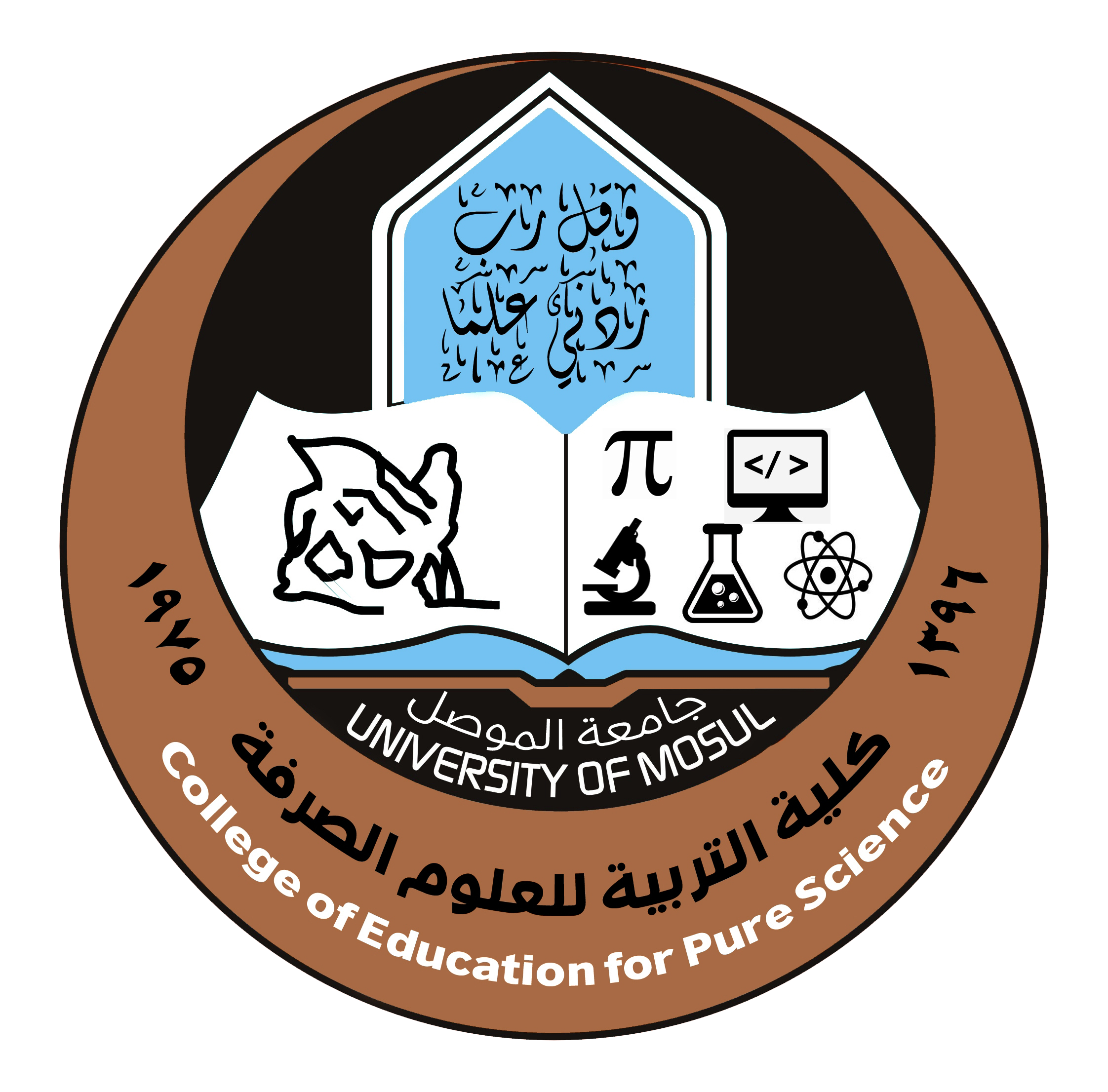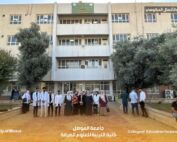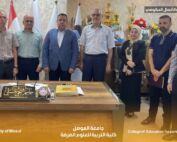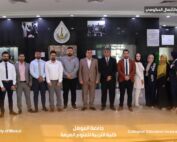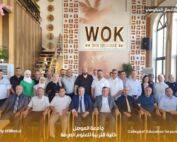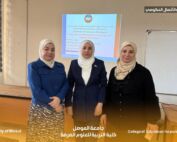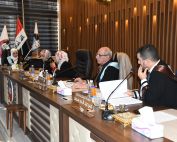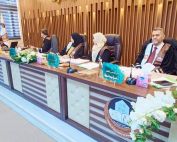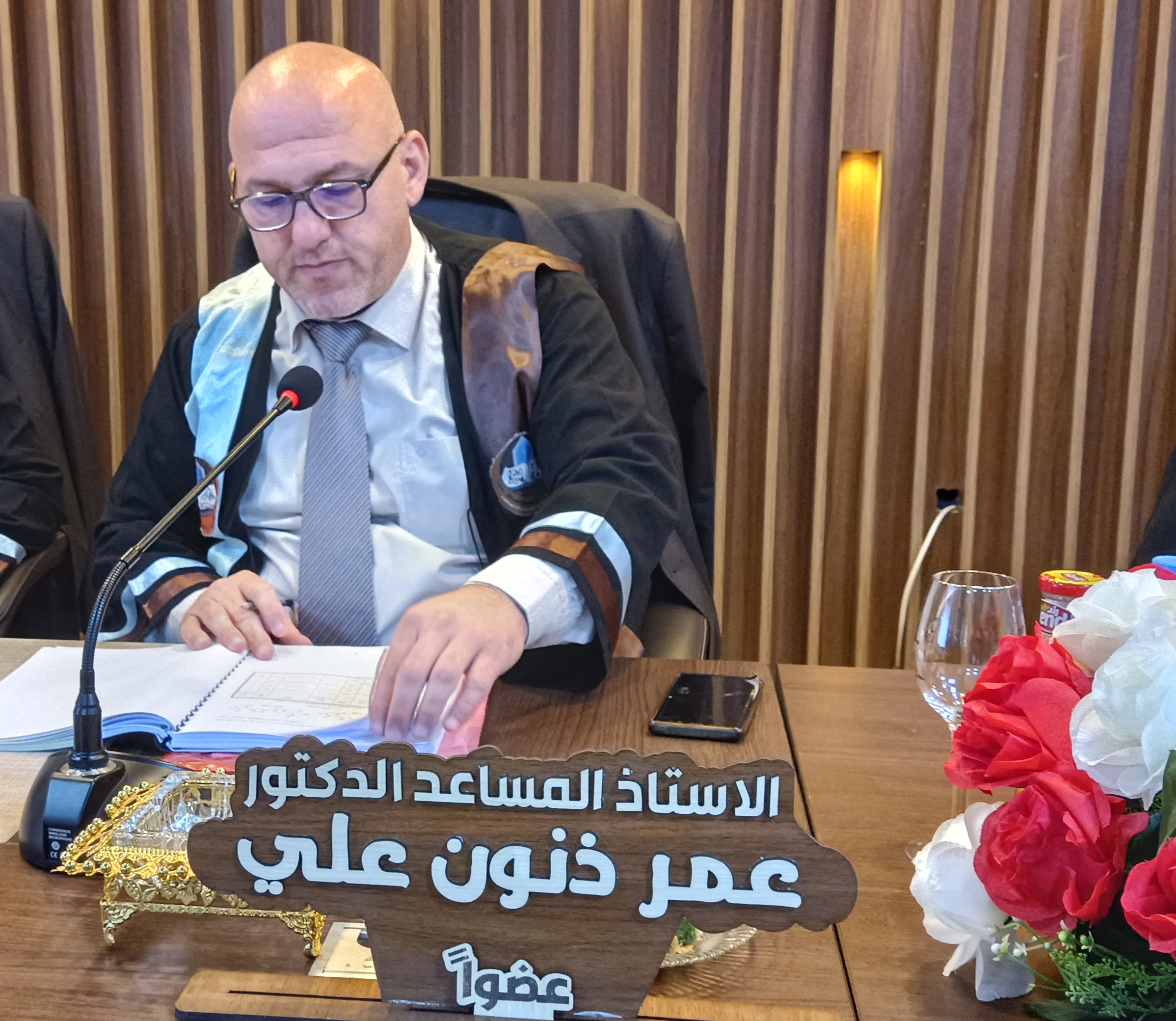8 February، 2023
Ph.D. Dissertation Viva_ Biology Department
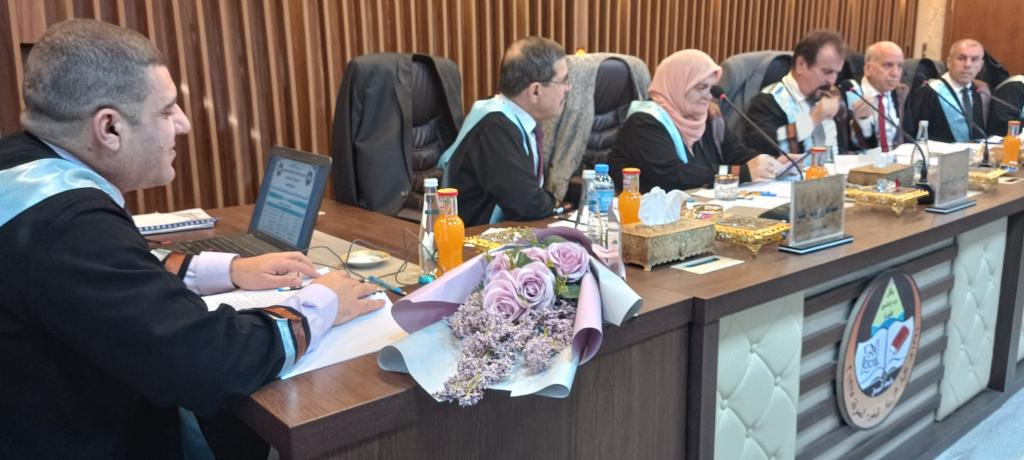
PH.D. Dissertation Viva in the College of Education for Pure Science entitled ” The environmental reality of the Danvali Valley and its environmental impacts on the Tigris River, using mathematical models in the city of Mosul”The College of Education for Pure Science, University of Mosul, has done the PH.D. Dissertation Viva entitled ” The environmental reality of the Danvali Valley and its environmental impacts on the Tigris River, using mathematical models in the city of Mosul”,On Wednesday, February 8 2023, the respected Dean of the College, Assistant Professor Dr. Qais Ismail Ibrahim, the Honorable Scientific Associate and Administrative Associate, the Honorable Head of the Department of Biology, and a number of the college’s teachers were attended the viva. The current study, presented by the PH.D. Student Mhmood Fayz M. Al-Mashhadany in the Department of Biology, was conducted in the laboratories of the Research Unit of the College of Education for Pure Sciences / University of Mosul, which aims to assess the environmental reality of the Danfali valley and its environmental impacts on the Tigris river using mathematical models in the city of Mosul. As the valley transports wastewater to many quarters on the left side of the city of Mosul, and as it flows through agricultural lands, its water is consumed to irrigate crops and animals watering sometimes until it meets the Tigris River,. Seven sites were identified on the Danfali valley and three sites on the Tigris river to collect water samples, starting from December 2020 until November 2021, using clean polyethylene terephthalate bottles that are washed several times with sample water before filling them. As for the samples for (DO, BOD5), they were collected in special bottles with a capacity of 100 ml, with a tight stopper and with the least possible ventilation. As for the samples for the bacterial examinations, they were collected in previously sterilized villas according to the internationally approved methods. Benthic sediment samples and vegetation were collected seasonally for the determination of heavy metals. Physical (temperature, salinity), chemical (pH, total hardness, alkalinity, negative and positive ions and some heavy elements (Pb, Cu, Cd, Zn) and bacteriological (total number of TPC, Fecal coliform and Escherichia coli) were conducted on the water, and mathematical models were applied to evaluate the quality of water for irrigation, livestock watering, and the human health risk (HHR) of heavy metals. as well as the mathematical models for determining sediment quality and estimating the concentration of heavy metal (HMs) in vegetable plants in the study area, along with estimating the bioaccumulation factor (BCF) of Phragmites communis and Silybum marianum. The results of the study indicated that the quality of the studied water was highly polluted when using the Overall Pollution Index model, while the quality was between good (Class II) to excellent quality water for irrigation (Class I), as the values of the Sub-index model ranged between (0.413-0.577) during During the study period, while the quality was high pollution and unsuitable for watering livestock and poultry as a result of high levels of phosphate ions to reach (4.91) mg. l-1, and the total number of bacteria, which reached (898) x 105 cells. ml-1.As for the soil and benthic sediments, the results indicated that the benthic sediments were from the Un Polluted to Moderately Polluted category, according to the Geo-accumulation Index, while (92%) of the samples were from The Pollution Exit category according to the Pollution Load Index (PLI), with values reaching (2.372). Also, the values of the Nemerow pollution index (PIN) for soil and sediment pollution with heavy metals fluctuated between (4.206-1.692), so that the studied samples ranged from moderately polluted to severely polluted sediments. While the sediments were in the category of Low risk to Medium risk according to the Potential Ecological Risk index (PERI). Concerning the concentrations of heavy metals (Pb, Cu, Zn and Cd) in the parts assigned to plants Allium cepa, Raphanus sativus, Lactuca sativa, Beta vulgaris, and the fruits of Cucumis melo and Abelmoschus esculentus were within the internationally permitted limits. As for the values of Bio concentration factor (BCF) for HMs in Phragmites communis and Silybum marianum, the similarity is noted in their relatively high susceptibility to lead and cadmium concentration in the root and shoot, to classify the two plants in the Strongly Bioconcentration category, with Bioconcentration factor values reached (2.021 and 1.706) and (1.646 and 1.267) respectively, so they can be used for vegetative treatment of lead and cadmium, while they were in the category of Medium Bioconcentration for copper and zinc for not exceeding BCF values of (0.506 and 0.442), 0.782 and 0.403) respectively.The Viva committee was chaired by Prof. Dr. Muhammad Saeed Faisal/ University of Mosul / College of Education for Pure Science and the membership of Prof. Dr Hassan Saber Mohamed/ University of Mosul / College of Education for Pure Science, Asst. Prof. Dr. Dilshad Kanjo Ahmed / Salahaddin University – Erbil / College of Science, Asst. Prof. Dr. Yusra Majeed Shehab / University of Mosul College of Environmental Sciences and Technologies, Asst. Prof. Dr. Abdel Moneim Muhammad Ali Kanna / University of Mosul, College of Science and under the supervision and membership of Prof. Dr. Abdul-Aziz Y.T. Al-Saffawi / University of Mosul / College of Education for Pure Science.
